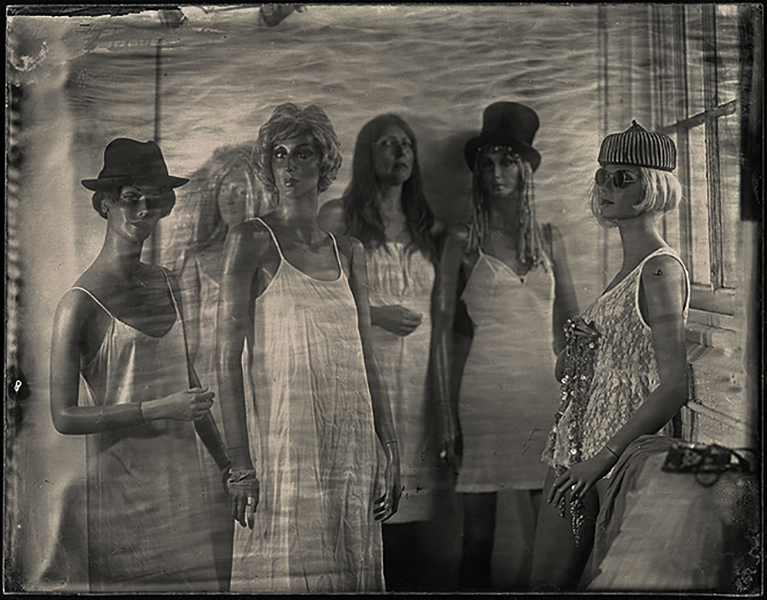
Wet Collodion Tintype Ambrotype Gallery
Wet plate collodion photography in Asheville by David Humphreys
Wet Collodion
The wet plate process was invented in 1851 by Fredric Scott Archer and involves the use of a series of chemicals poured onto a hand held plate of metal (Tintype) or glass (Ambrotype). The wet plate collodion process was the second commercially viable photography process after the daguerreotype. Some steps of the process can be performed in the light and other steps must be performed in a darkroom under a safelight. Plates are varnished or waxed after processing. During the civil war Mathew Brady, Alexander Gardner, George Norman Barnard, Timothy H. O'Sullivan, Andrew J. Russell and others used this process to record battlefields and to make portraits of soldiers. The history of wet plate collodion was rather short, lasting about twenty years. due to it’s cumbersome nature requiring the plate to be processed immediately after the image is taken thus requiring a portable darkroom in the field.
With proper care tintypes and ambrotypes are of a high resolution and can last for centuries and there are many fine examples still around from the middle of the nineteenth century. In this age of digital, photography has seen a small but growing movement to return to it’s origins, and thus wet collodion and film photography have seen a worldwide revival. Sally Mann is a well known contemporary photographer making wet plate photographs. The wet collodion process has nostalgic appeal for many photographers as it forces one to slow down, think, to plan each exposure, and it feels more real and personal.






































